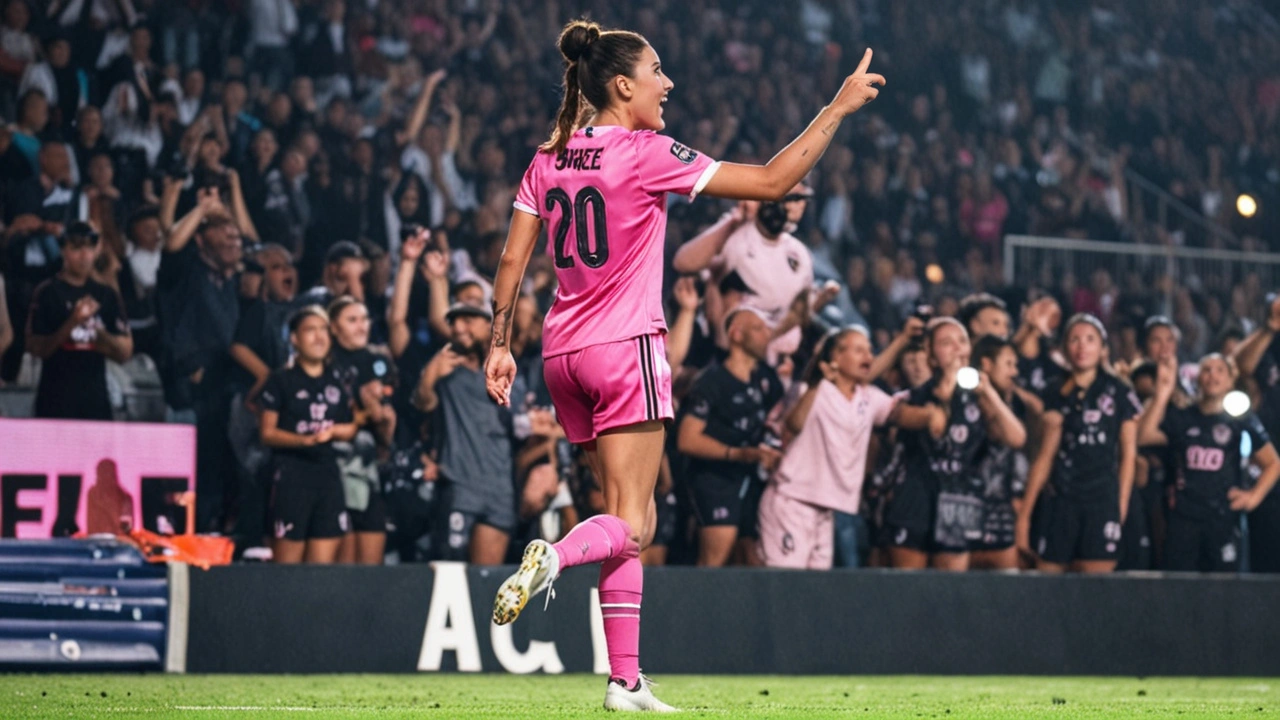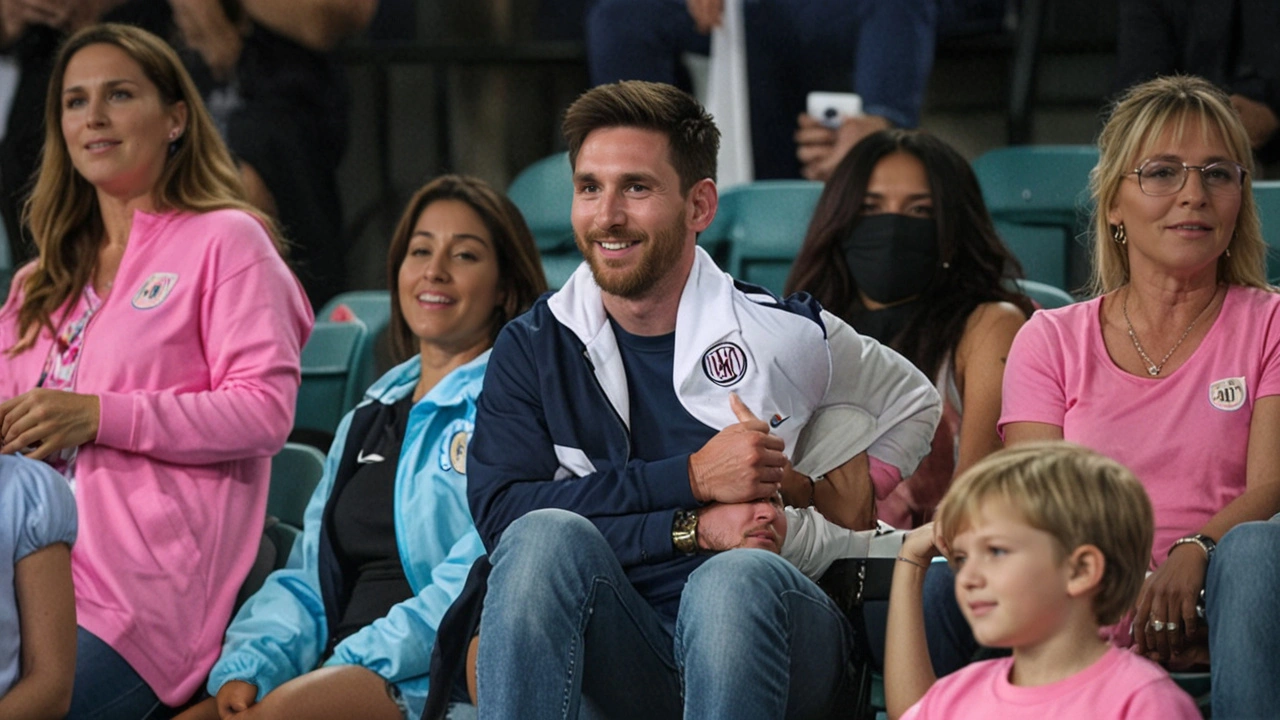Messi's Recent Injury Woes
Lionel Messi, widely regarded as one of the greatest footballers of all time, has found himself on the sidelines following a ligament injury in his right ankle. The incident occurred during the high-stakes final of the Copa America 2024, where Argentina faced off against Colombia. This injury has raised concerns among fans and teammates alike, as Messi's presence on the field is irreplaceable.
During the intense Copa America final, Messi, known for his agility and skill, unfortunately, sustained the injury that has put a temporary halt to his momentum. The ligament damage in his ankle became apparent, causing immediate concern among spectators and medical staff. Hopes were high as Messi played a pivotal role, but the injury dampened the celebrations despite Argentina clinching the title.
Inter Miami's Cautious Approach
Inter Miami’s head coach, Tata Martino, has shared insights into Messi's current state and the precautionary measures being taken to ensure his full recovery. Martino emphasized that Messi will be evaluated on a weekly basis, highlighting the importance of not rushing the recovery process. “We cannot take any risks,” Martino stated, indicating the club's dedication to prioritizing Messi's health over his urgent return to the pitch.
Messi's injury comes at a crucial time for Inter Miami, a team that has greatly benefited from his presence since his arrival. His influence on both the team's performance and its morale cannot be understated. With Messi on the sidelines, the team faces a challenging period, trying to compensate for the absence of their key player.
Support from the Sidelines
Despite his injury, Messi has remained actively involved with the team. He recently attended Inter Miami's match against Toronto FC, where he was seen wearing a walking boot on his injured ankle. His presence, even off the field, serves as a morale booster for his teammates and fans who eagerly await his return. Messi's commitment to supporting his team during his recovery period has not gone unnoticed.
Inter Miami faced Toronto FC without their star player, and while the game’s outcome was a hot topic, the primary focus was on Messi's visible support from the stands. The sight of him in a walking boot was a stark reminder of his current physical state, but it also symbolized hope and resilience. Fans and experts alike are keeping a close eye on his recovery journey.
Upcoming Matches and Absences
Messi's injury has led to him missing several important matches, including the upcoming game against Chicago. The absence of such an influential player is deeply felt, and the team is bracing for these challenges. The management is ensuring that Messi's recovery is handled with utmost care, without putting unnecessary pressure on him to return prematurely. This cautious approach reflects the club's long-term vision for both Messi and the team's overall success.
The team's preparations for the absence of their key player involve reshuffling strategies and leveraging other talents on the roster. While it's undeniably a setback, the situation also presents an opportunity for other players to step up and fill the void left by Messi. The upcoming match against Chicago will indeed test the team's adaptability and resolve.
A Star's Journey to Recovery
Messi, known for his exceptional resilience and dedication, is reportedly focusing on his recovery with great determination. Having already achieved the remarkable feat of winning the Copa America title with Argentina, Messi's immediate goal is to return to peak condition and rejoin his teammates on the field. His journey is being closely monitored by fans and fellow athletes who have continually expressed their support and admiration.
Messi's history of overcoming challenges is a source of inspiration for many. His current situation, while unfortunate, is another chapter in his storied career. The entire football community is rallying behind him, eagerly awaiting the day he laces up his boots once more and dazzles the world with his extraordinary talent.
Controversy Surrounding the Copa America Triumph
As Messi works on his recovery, a different kind of issue has emerged from Argentina's Copa America victory. Argentina's sports sub-secretary Julio Garro has called on Messi to apologize for racist chants made by some of Argentina's players during the celebrations. This controversy has added an unexpected layer of complexity to Messi's current situation, as he is revered not only for his skill but his sportsmanship as well.
FIFA, the governing body of international football, is also investigating the incident to determine the appropriate course of action. This investigation underscores the importance of maintaining integrity and respect within the sport, values that Messi himself has always upheld throughout his career. The call for an apology aims to address and rectify the inappropriate behavior displayed during the celebrations.

The Broader Impact of Messi's Injury
Messi's injury and its ramifications extend beyond just his personal recovery. The influence of his absence is felt in the broader football community, impacting team dynamics, fan engagement, and competitive balance. Inter Miami is undoubtedly facing a testing period, having to adjust on multiple fronts while Messi recuperates.
Nevertheless, the club remains optimistic about Messi's return, holding out hope that his recovery process will be smooth and timely. The situation also sparks discussions about player welfare, the pressures of professional sports, and the necessity of comprehensive medical care for athletes. Moving forward, this experience could lead to enhanced protocols and support systems within the league.


Matt Heitz
July 18, 2024 AT 19:46From a patriotic standpoint, it's disconcerting to see any of our star athletes sidelined by a preventable mishap. The coaching staff's cautious approach reeks of overcautious bureaucracy that undermines the competitive edge of American soccer. One could argue that the medical team is leveraging risk‑aversion rhetoric to justify a slower return, which indirectly benefits rival leagues. Moreover, the gloss over the ligament severity in the public narrative seems designed to pacify the fanbase while masking strategic hesitation. Ultimately, the nation deserves a transparent assessment of Messi's condition, not a euphemistic press release that downplays the impact on Inter Miami's championship aspirations.
Susan Mark
July 18, 2024 AT 19:47True, the club's measured rehab schedule might feel frustrating, but it's crucial for long‑term durability. Consistent physiotherapy and gradual load‑bearing can help Messi avoid re‑injury and keep his performance elite when he returns.
Jason Jennings
July 18, 2024 AT 19:48Another day, another excuse.
Diego Vargas
July 18, 2024 AT 19:50When examining the biomechanics of an ankle ligament tear in elite footballers, several factors converge to dictate recovery timelines. First, the specific grade of the sprain-whether a microscopic fiber rupture or a complete tear-directly determines the required immobilization period. Second, the athlete's prior conditioning and muscular support around the joint influence how quickly proprioception can be restored. Third, surgical intervention versus conservative treatment creates divergent rehab pathways; surgery typically adds a six‑to‑eight‑week postoperative protocol before functional training resumes. Fourth, the inflammatory response in the acute phase must be managed to prevent excess scar tissue formation that could limit range of motion. Fifth, the dosage and progression of physiotherapy modalities-such as cryotherapy, electro‑stimulation, and controlled loading-are calibrated to the individual's pain tolerance and swelling metrics. Sixth, psychological resilience plays a non‑trivial role; athletes who maintain mental focus often achieve faster neuromuscular retraining. Seventh, nutritional support, including adequate protein intake and anti‑inflammatory nutrients, accelerates tissue repair. Eighth, the club's medical team must coordinate closely with strength coaches to gradually re‑introduce plyometric exercises without overloading the healing ligament. Ninth, monitoring tools like MRI, ultrasound, and functional hop tests provide objective data to adjust the timeline. Tenth, any setbacks-such as minor re‑aggravation during early gait training-necessitate a step‑back in the protocol. Eleventh, the player's match load upon return should be titrated, starting with limited minutes and ramping up based on real‑time performance analytics. Twelfth, incorporation of balance boards and proprioceptive drills can restore joint stability and reduce future injury risk. Thirteenth, a period of sport‑specific technical work, such as passing drills and light shooting, ensures the athlete regains confidence in the injured limb. Fourteenth, post‑return monitoring continues for several weeks to catch any latent issues. Finally, the cumulative effect of these variables often results in a projected return window of six to twelve weeks for a professional like Messi, assuming no complications arise. Understanding this multifactorial process underscores why a rushed comeback could jeopardize both the player’s health and the team’s long‑term success.
Alex Lee
July 18, 2024 AT 19:50Bottom line: take it easy, heal fully, then play.